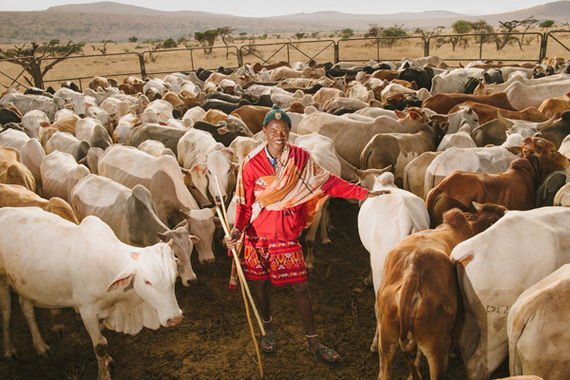Development and conservation are often viewed as separate or even opposing needs. The truth is, we simply won't be successful in addressing either the world's economic or environmental challenges unless we bring them together more often.
USAID is the United States' leading organization focused on international economic development. Its principal tool is providing financial assistance to support economic growth around the world. As you can imagine, nature protection was not part of its original focus when it was founded back in 1961.
Yet, things have changed since then. Like The Nature Conservancy (TNC), USAID has evolved a great deal, keeping core values while also bringing new strategies aboard. USAID has put increasing emphasis on investments in nature to strengthen economic development for human well-being, which is very encouraging to organizations like TNC.
In fact, USAID has partnered with TNC since 1990 on forest, marine and freshwater conservation projects in Latin America, the Asia Pacific, and most recently in Africa. And now our visions are even more aligned. This is especially true with USAID's release last month of its new Biodiversity Policy. It is the strongest statement to date of their recognition that conservation is a key component of successful and sustainable human development. The policy shows that USAID invests in conservation because it works. Sustainability is good business.
I still remember when I first met Dr. Rajiv Shah, Administrator of USAID. My book Nature's Fortune had just been published, which argues that nature is the fundamental underpinning to human well-being. Dr. Shah kindly expressed enthusiasm for this argument, as the same was true from his experience leading USAID.
But he also chided me for failing in my book to give USAID proper credit as a key investor in TNC's first water fund project in Quito. This was a fair point, and my mistake, since water funds are a great example of USAID taking risks on different approaches to development. Here, big consumers of water--utilities, industries, producers-- invest in a fund that protects nature upstream to ensure clean, safe drinking water remains available for residents as well as the big consumers. Companies save money by preempting the need for costlier water treatment in the future. Water remains clean and available for local communities. And more habitat is conserved for wildlife.
USAID's initial investment in water funds in Quito and Bogota helped TNC replicate the model across 32 cities in Latin America. Next up, TNC is exploring how to export water funds to China and Africa to help more cities develop sustainably.
TNC is delighted to partner with USAID on many on-the-ground projects of this kind happening all around the world.
Take the Amazon, for example, a place rich in rare species with a burgeoning economy. Here, USAID and partners including TNC support the Initiative for Conservation in the Andean Amazon (ICAA), designed to strengthen the capacity of Indigenous Peoples in conservation and resource management. ICAA has placed nearly 2 million hectares of land under improved management; implemented 167 policies and agreements in favor of Indigenous rights, conservation and sustainable development; and leveraged more than $17 million in funds to carry out project activities. And, communities are better able to monitor illegal poaching, mining and deforestation happening when outsiders enter Indigenous lands. These results can be replicated to many of the 385 indigenous groups in the Amazon region, including populations in Colombia, Ecuador and Peru.
And in Africa, one of TNC's key partners is the Northern Rangelands Trust (NRT), a wonderful example of a community development model sprung in part from USAID's support back in 2004. NRT includes 27 community owned and managed conservancies to improve people's livelihoods, enhance security for wildlife, and increase trade and tourism. TNC's Livestock to Markets project in partnership with NRT is an extension of these important goals.
Through Livestock to Markets, TNC and NRT have created a market for sustainably-managed cattle among traditional pastoralist communities. In a region where 70 percent of wildlife is found outside of parks, and where we are seeing 4-8 percent growth in GDP, working lands have been stretched to capacity By meeting better grazing standards, herders earn higher prices for healthier cows and more grass is available where it's needed for both livestock and wildlife. Communities are also bringing in more money as wildlife tourism flourishes. In our initial pilot efforts, TNC is learning that there are many communities eager to put their lands under a long-term management plan for this strong return on investment.
Water funds, ICAA and Livestock to Markets are just three examples (among many) of organizations, communities and others coming together, taking risks and charting a new path toward sustainable development for nature and people.
While natural resources around the globe are under increasing pressure, these kinds of win-win projects make me feel optimistic for the future. I applaud USAID for recommitting to nature protection, and for articulating the important connections between conservation and human development. We'll need a world where communities and businesses develop sustainably and with nature in mind.
Image: A Lewa herder watches over cattle at Lewa Wildlife Conservancy in Africa Photo © Ami Vitale

